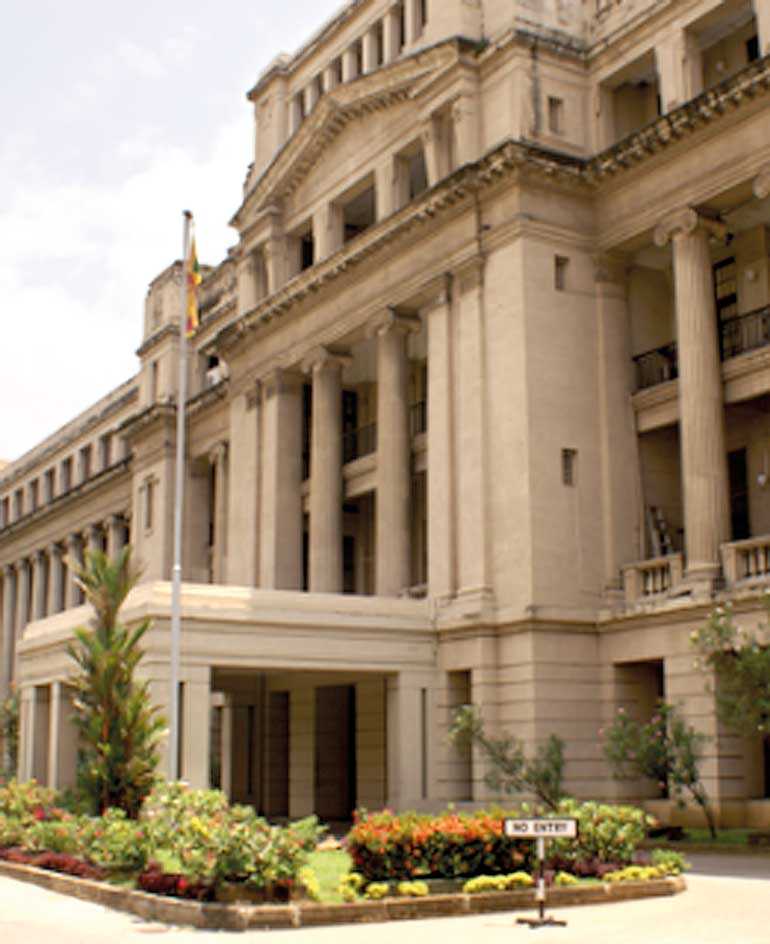Monday Nov 03, 2025
Monday Nov 03, 2025
Thursday, 10 January 2019 00:29 - - {{hitsCtrl.values.hits}}

Recently the President issued a circular on recruitments to boards of public corporations and enterprises, overriding the prerogative of ministers to appoint boards to such entities under their jurisdictions.
The new process includes the review of a minister-nominated board by a committee of two nominees of the President, two nominees of the Prime Minister and one nominee of the Minister for Finance, using the criteria for recruitment established by a Cabinet decision dated 20 April 2016.
A mechanism for the oversight of public institutions is long overdue, and it is good to focus on boards of management. However, there are two major problems with this circular.
First, the boards can be appointed only after a final approval is given by the President. There are 500 plus public corporations and enterprises. What further criteria are to be used by the President to vet names of appointees to these boards? Besides, does the President have the authority to veto appointments to institutions under the jurisdiction of the ministers? My reading of the powers of President as outlined in Constitution tells me it is not.
Even if we overlook the legality issue, what is the point of spending valuable time checking on educational and other credentials which are not guarantees of performance? The antidote to cronyism by ministers is not an opportunity for cronyism or political victimising by the chief executive. Openness of the process is the appropriate response.
For example, if the ministries are required to post a short CV in a standard format of every board member of a public corporation or an enterprise under their jurisdiction, the possibility of a large number of eyeballs on appointee credentials and a storm on social media about irregularities would be a better deterrent.
At the end of the day what matters is the performance of our public institutions which have become too many mouths to feed. In this column, I like to point out that limiting evaluation of government departments to the quality of inputs or efficiency of processes is a practicality, but government corporations and enterprises need to be evaluated for their effectiveness.
I also like to emphasise that civil society activism is essential here because government are not very good at self-assessments and the corporate sector should support civil society through their respective chambers.
Performance of public sector institutions
Two types of institutions comprise the Government. Government departments form the core of the Government and come under the purview of Committee on Public Accounts (CPOA) in the Parliament. Other entities are public corporations or public enterprises which are set up as “body corporate with perpetual succession and a common seal and may sue and be sued in such name and so on” and come under the oversight of the Committee on Public Enterprises (COPE) in the Parliament.
Government departments serve regulatory or service functions which are considered essential. Public corporations also serve regulatory and/or service functions but the necessity for them is more subjective. Public corporations may be set up under the names of commissions, councils, authorities, secretariats, etc.
Public enterprises registered under the Companies Act with objective of producing goods or services and are owned partially or wholly by the Government. The necessity for the Government to maintain these enterprises is even more subjective than that for public corporations. The Inventors Commission, for example, is a public corporation and the Bank of Ceylon is a Government-owned company.
The number of Government departments increased to 837 in 2016 from a mere 198 in the first Parliament in the period 1978-1988. These ‘departments’ include the Ministries, Departments, Provincial Councils, Local Authorities, District Secretariats and Divisional Secretariats.
COPA has established a system of evaluating these for management efficiency and financial performance. These performance measures are inadequate as far as Government departments are concerned. For example, the Prisons Department cannot be evaluated on the number of prisoners it holds because that number is out of its control.
COPA can add value to its exercise by making the performance measures and the data underlying the measures available on the internet. The realm of public corporations and public enterprises is less well articulated and there are no systematic evaluations of their performance.
With each new Cabinet, all Government bodies are reassigned to a ministry or the Executive by a gazette notification. All Government departments are listed in the gazette, but not all corporations and enterprises. For example, public corporations like the Telecommunication Regulatory Commission and the National Education Commission or public enterprise like Sri Lanka Telecom which comes under the President are not included in the gazette. All except 55 or so of the strategically important enterprises also remain outside of the public eye.
Advocate Institute did an extensive report on the State-Owned Enterprises or public enterprises for which data are available. As they noted, during the 2009 to 2014 period the number of public enterprises increased from 107 to 245. Fifty-five of more strategic enterprises showed profits totalling Rs. 530 billion and losses of Rs. 636 billion for a cumulative loss of Rs. 106 billion. SriLankan Airlines alone accounted for a loss of Rs. 94 billion in 2014.
The UNF Government which came to power in August 2015 established a new Ministry of Public Enterprises with Kabir Hashim as the Minister in charge and Eran Wickramaratne as the Deputy Minister. It sounded like a competent team then, but what did they accomplish? The other day the newspapers reported that the Government has appointed a committee to restructure SriLankan Airlines. Why only now?
Has the Ministry of Public Enterprise done enough?
It is not fair to judge the Ministry only on its inability to restructure SriLankan Airlines because it is a thorny problem inherited from the previous Government. The shuffling and reshuffling of cabinets have not helped either.
In February 2018, Lakshman Kiriella was appointed as the Minister for Public Enterprises. On what criteria we don’t know. The coup of 26 October 2018 disabled the Government for 47 days and it is not quite back on track yet. However, the Ministry had a good stretch of time from September 2015 to February 2018 to achieve something and an evaluation of its performance during that period is in order.
In fact an evaluation of the Ministry of Public Enterprises is a good starting point to develop a methodology for assessing the performance of State institutions, because it is easier to measure the performance of enterprises.

Focus on inputs is counterproductive
Oversight on public institutions is long overdue, but following up on credentials of boards of management is only a small part of the story. The guidelines supposedly approved by a cabinet decision dated 20 April 2016 and appended to the subject circular, require a nominee to a board of management to possess a degree or a professional qualification, aged no more than 70 and have relevant experience.
The problem with these criteria is that they do not differ significantly from recruitment criteria for the bureaucracy in Government departments. Public corporations and enterprises are set up outside of the bureaucracy because we expect different level of performance from them.
Performance evaluation of public corporations and enterprises
Relying on a set of rigid qualification criteria will only stunt these institutions further. As stated earlier, CVs of boards of management and executives should be made publicly available. The most relevant criterion for evaluation of these entities is the last clause in the 2015 Cabinet guidelines which says “evaluation of the boards of management should be carried out annually by the appropriate authority using selected performance criteria”.
To implement, each institution should be asked to come up with their own performance criteria. In the case of the University Grants Commission and public universities, for example, the dropout rate, graduation rate and employment rate of students, qualifications and publications of faulty are some relevant performance measures.
It is not widely known that though the Government spends for a certain intake, the universities are not able to enrol the full number of students, dropout rates are significant and time to graduate is too high. Openness is the key here. The performance data for each department in each university should be up on the web for all to see and comparative summaries presented to COPE.
Open Government and civil society activism
Practices from around the world show that governments are not very good at self-assessment. Self-funded lobby groups or citizen groups that keep tabs on governments exist in developed countries. In developing countries, civil society organisations struggle to fund their activities through foreign donors, but they are derided as dollar vultures by those who profit from dysfunctional state institutions. RTI legislation has helped, but a more coordinated effort is needed and the corporate sector needs to support civil society.
The role of the chambers
Individual companies in the corporate sector shy away from CSR activities that have anything to do with accountability of Government. It is understandable. They, as individual companies, cannot afford to antagonise the Government.
However, the chambers are set up to deal with larger issues and we need to question whether the chambers are taking a sufficient interest in the setting up and perpetuation of Government corporations and enterprises which are often in unfair competition with private enterprises or how levies imposed on industries are used by these corporations.